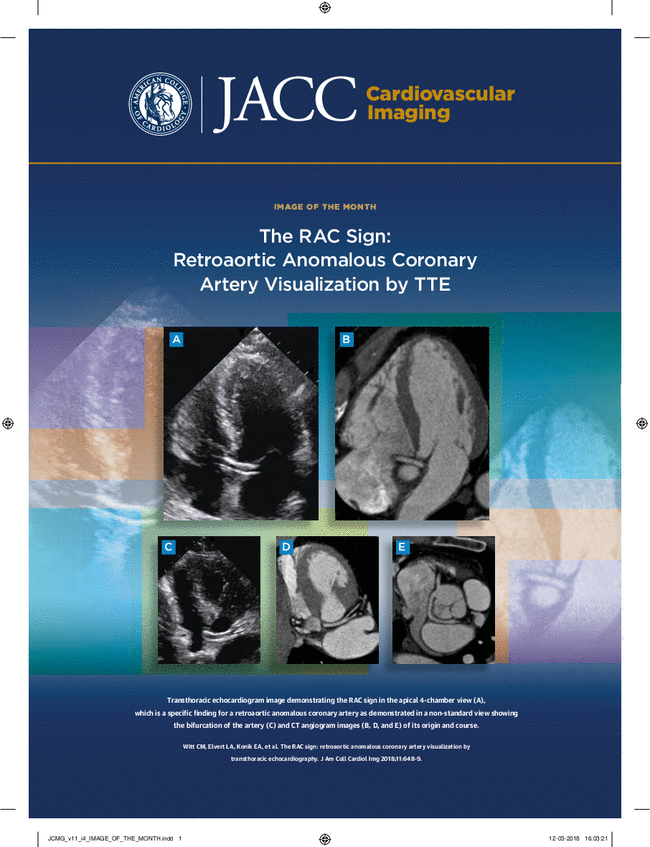功能性三尖瓣反流的非缺血性间隔纤维化提供了不良重构和预后的增量分层。
IF 12.8
1区 医学
Q1 CARDIAC & CARDIOVASCULAR SYSTEMS
引用次数: 0
摘要
背景:功能性三尖瓣反流(TR)是由收缩功能障碍、心室扩张或心肌组织改变导致的瓣膜完整性受损引起的。虽然右心室(RV)功能障碍是公认的TR不良结局的驱动因素,但心肌组织损伤,特别是非缺血性间隔纤维化(NIsF)的影响在很大程度上仍未被研究。目的研究NIsF与右侧心室重构的相关性,并评估其对功能性TR患者死亡率的增量预后价值。方法晚期(≥中度)功能性TR患者接受综合心脏磁共振(CMR)评估。晚期钆增强(LGE)用于识别NIsF,定义为室间隔心肌中部或心外膜区域的高增强。CMR测量了心脏左右两侧的功能指数和几何指数。获得全因死亡率的随访数据。结果共663例晚期TR患者(平均年龄:63.8±16.0岁;(53%男性),其中29.4%被发现患有NIsF。NIsF与不良心室重构密切相关,包括左心室和右心室体积增大、收缩功能降低和TR严重程度增加(均P < 0.001)。TR返流分数随NIsF程度的增加而逐渐增加(无NIsF, 34.9%±1.5%;1段,38.1%±13.0%;2段,40.8%±13.8%;P < 0.001)。在平均4.3±4.3年的随访中,25.3%的患者死亡。NIsF与死亡率独立相关(HR: 1.79 [95% CI: 1.26-2.56];P = 0.001),即使在调整了包括年龄、TR严重程度、RV功能障碍和扩张在内的传统风险指标后也是如此。Kaplan-Meier分析显示,与非NIsF患者相比,NIsF患者的死亡风险明显更高(P < 0.001)。结论:在晚期TR患者中,NIsF是不良右侧心室重构的重要标志物,比传统的风险标志物具有更大的预后价值。本文章由计算机程序翻译,如有差异,请以英文原文为准。
Nonischemic Septal Fibrosis in Functional Tricuspid Regurgitation Provides Incremental Stratification of Adverse Remodeling and Prognosis.
BACKGROUND
Functional tricuspid regurgitation (TR) arises from impaired valve integrity resulting from contractile dysfunction, chamber dilation, or myocardial tissue alterations. Whereas right ventricular (RV) dysfunction is a recognized driver of adverse outcomes in TR, the impact of myocardial tissue injury, particularly nonischemic septal fibrosis (NIsF), remains largely unexplored.
OBJECTIVES
This study aims to evaluate the association of NIsF with adverse right-sided chamber remodeling and to assess its incremental prognostic value for mortality in patients with functional TR.
METHODS
Patients with advanced (≥ moderate) functional TR underwent comprehensive cardiac magnetic resonance (CMR) evaluation. Late gadolinium enhancement (LGE) was used to identify NIsF, defined as hyperenhancement in the midmyocardial or epicardial regions of the interventricular septum. Cine CMR measured functional and geometric indices of the left and right sides of the heart. Follow-up data were obtained for all-cause mortality.
RESULTS
A total of 663 patients with advanced TR (mean age: 63.8 ± 16.0 years; 53% male) were studied, and 29.4% were found to have NIsF. NIsF was strongly associated with adverse chamber remodeling, including larger left ventricular and RV volumes, reduced systolic function, and increased TR severity (all P < 0.001). TR regurgitant fraction increased stepwise with NIsF extent (no NIsF, 34.9% ± 1.5%; 1 segment, 38.1% ± 13.0%; 2 segments, 40.8% ± 13.8%; P < 0.001). Over a mean follow-up of 4.3 ± 4.3 years, 25.3% of patients died. NIsF was independently associated with mortality (HR: 1.79 [95% CI: 1.26-2.56]; P = 0.001), even after adjusting for conventional risk markers, including age, TR severity, RV dysfunction, and dilation. Kaplan-Meier analysis demonstrated significantly higher mortality risk among patients with NIsF compared with patients without NIsF (P < 0.001).
CONCLUSIONS
Among patients with advanced TR, NIsF is an important marker of adverse right-sided chamber remodeling and provides incremental prognostic utility beyond conventional risk markers.
求助全文
通过发布文献求助,成功后即可免费获取论文全文。
去求助
来源期刊

JACC. Cardiovascular imaging
CARDIAC & CARDIOVASCULAR SYSTEMS-RADIOLOGY, NUCLEAR MEDICINE & MEDICAL IMAGING
CiteScore
24.90
自引率
5.70%
发文量
330
审稿时长
4-8 weeks
期刊介绍:
JACC: Cardiovascular Imaging, part of the prestigious Journal of the American College of Cardiology (JACC) family, offers readers a comprehensive perspective on all aspects of cardiovascular imaging. This specialist journal covers original clinical research on both non-invasive and invasive imaging techniques, including echocardiography, CT, CMR, nuclear, optical imaging, and cine-angiography.
JACC. Cardiovascular imaging highlights advances in basic science and molecular imaging that are expected to significantly impact clinical practice in the next decade. This influence encompasses improvements in diagnostic performance, enhanced understanding of the pathogenetic basis of diseases, and advancements in therapy.
In addition to cutting-edge research,the content of JACC: Cardiovascular Imaging emphasizes practical aspects for the practicing cardiologist, including advocacy and practice management.The journal also features state-of-the-art reviews, ensuring a well-rounded and insightful resource for professionals in the field of cardiovascular imaging.
 求助内容:
求助内容: 应助结果提醒方式:
应助结果提醒方式:


